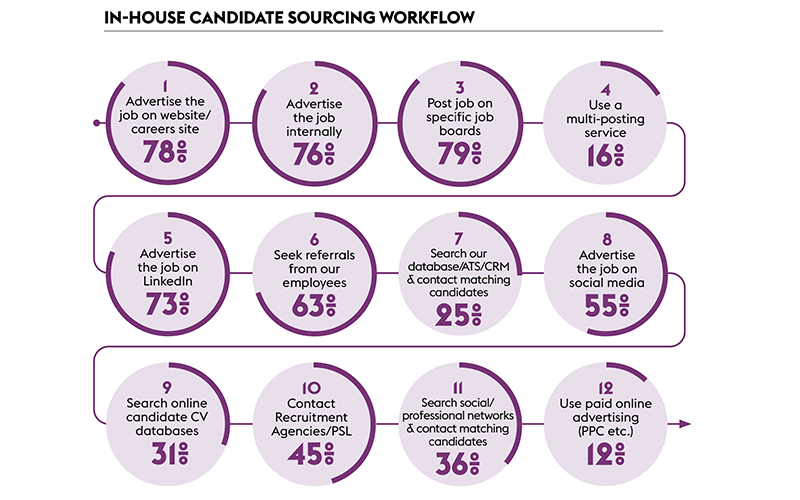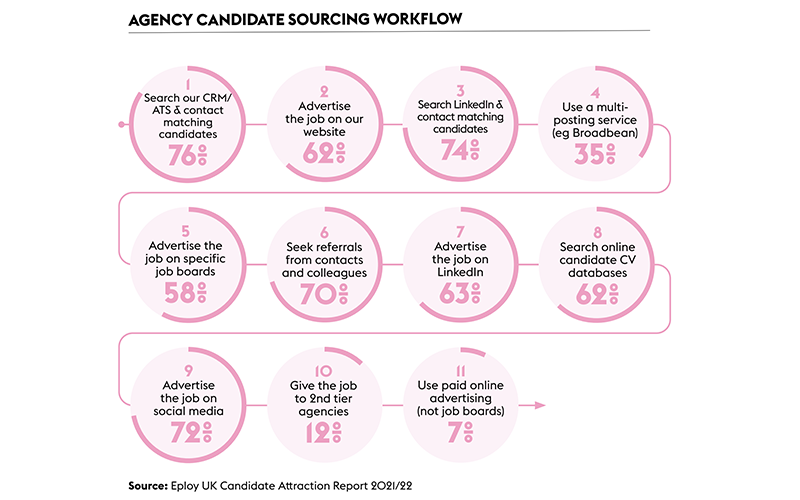Dive in to the talent pool

A new report from The Forum for In-House Recruitment Managers (The Firm) suggests that while most organisations use talent pools to fill their roles, not many do it effectively
As global candidate and skill shortages continue to plague employers and industries, a new report by The Firm found that while 73% of respondents in the in-house recruitment arena use talent pools and that 43% use them to manage both internal and external candidates, they are not being used effectively.
Talent pools only contribute to 20% or less of hires annually acknowledged the 86% of respondents who said they used them. No respondents reported hiring more than 50% of their annual recruits from talent pooling, the report said.
“Looking at these results, there’s an argument to say that talent pooling either isn’t being used effectively or it’s not an effective use of talent acquisition time,” the report said. “Given the restrictions on time and resource that many respondents flagged, it’s most likely that talent pooling needs to be given a dedicated focus, either with specific headcount or through existing teams.”
Only 23% of respondents said they were good at talent pooling and a nearly a third (29%) said they were poor at it. “Respondents said they lack the necessary resources to use talent pools effectively,” the report said, citing shortfalls of people (80%), time (69%) and technology (60%).
Resource planning was identified as a barrier to successful talent pooling within their organisations by 63% of respondents, and 31% identified GDPR and data integrity as an obstacle.
Asked who is included in organisations’ talent pools, respondents identified sourced candidates (86%), passive candidates (71%) and unsuccessful candidates (71%). Talent pools were also made up of candidates who were appointable at interview but not the highest scorer; referrals and alumni; tagged candidates; internal employees; and ‘silver medallists’.


Nearly half of respondents do not filter for candidates that reached specific stages during previous applications, the report found.
In terms of tagging, The Firm survey and report found that niche skillset was the main segmentation preferred by 86% of respondents, with seniority and region the second and third preferences. It also found that respondents were more inclined to use talent pools to find new recruits by filtering for specific roles and skills than by filtering by target groups.
DEFINING ‘TALENT POOL’
“A database of candidates who have, at some point, expressed an interest in working for your company… You can segment your talent pool into more specific pools based on locations, skills or other criteria. Segmenting your talent pool… can help keep candidates engaged and ‘warm’ by sending relevant job alerts and company updates.”
Source: The Firm and Eploy
Perhaps surprisingly, traditional advertising activities such as advertising a job on the organisation’s careers site, internally, on LinkedIn and on specific job boards are the top priorities in seeking to fill a role over sourcing activities such as employee referrals and checking their ATS/CRM systems.
Research for The Firm report suggested that neither in-house talent acquisition teams nor agency recruiters prioritised online/external databases as targets for searches, the narrative said.
Asked what main benefits organisations see from using talent pools, respondents ranked Time to Hire, Quality of Hire and Candidate Engagement in tight order, at respectively, 60%, 57% and 54%.
A staggering 91% of respondents are not measuring return on investment of their talent management activities.
Other findings included:
- 31% indicated that their current recruitment technology and processes do not allow them to use multiple tags for talent segmentation
- 82% do not automate candidate engagement while 77% favour recruiter contact
- 74% do not have a ‘specified cadence’ for engagement with talent pools
- 30% do not plan ahead with talent pooling at all.
The report said: “Given that 74% don’t have a specified cadence for engaging with their pools and that they are prioritising traditional methods of recruitment over talent acquisition activities, it seems likely that our survey respondents are in the same boat as most of their competition.
“That is to say,” the report elaborated, “that many have set a course and embarked on the journey but still have some way to go in developing a bona fide talent management strategy that draws together and realises the potential of their talent acquisition activities.”
The survey was conducted by The Firm in March and April this year in connection with recruitment technology company Eploy. Respondents came from a wide variety of industries.
Image credit | iStock
